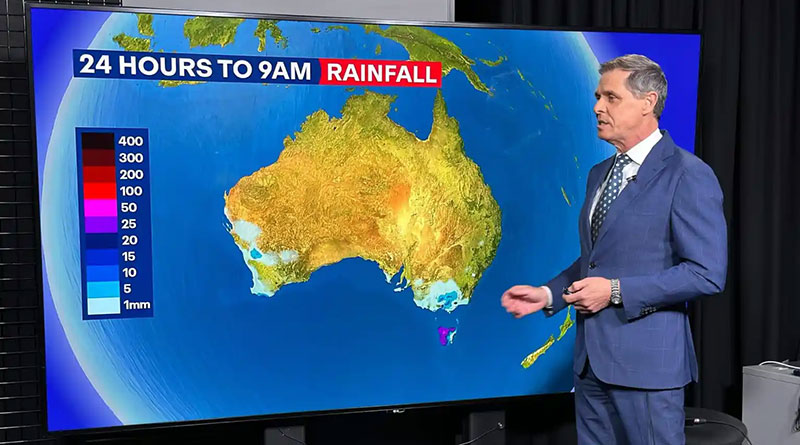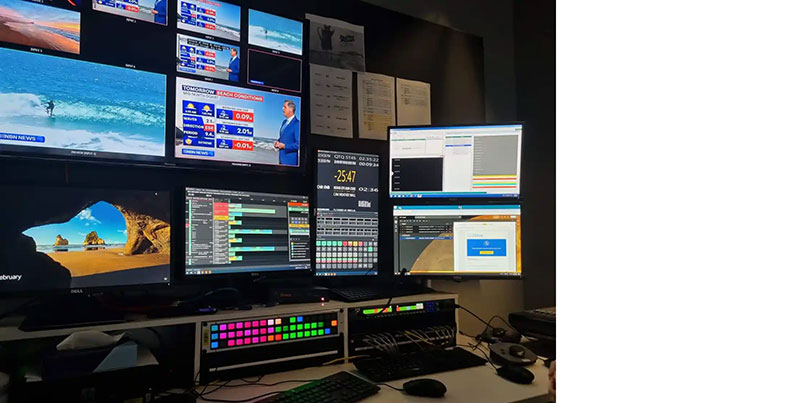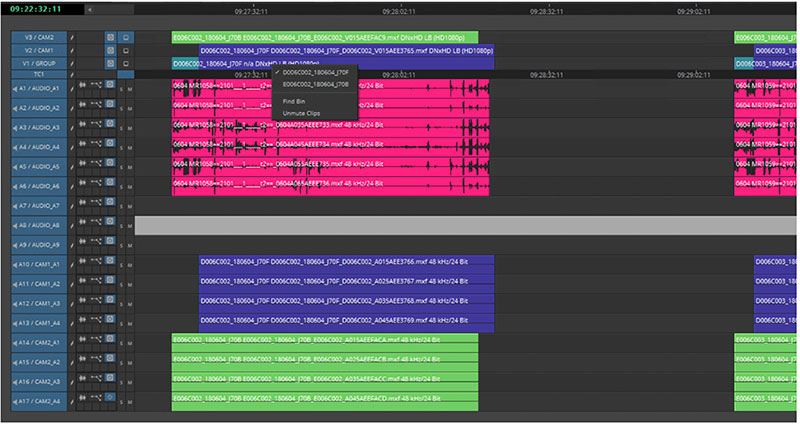Nine’s NBN News uses a compact, single-operator automated control room running on Viz Mosart to pre-record regional packages of content to play out during the Primetime Bulletin.

Australia’s 9News channel operates a local news service, NBN News, that spans six separate markets across the Northern NSW and Gold Coast regions. To continue meeting the demand for their content, NBN News uses a compact, single-operator automated control room system to pre-record customised packages of content that are later played out during the main primetime bulletin.
Equipped with Vizrt’s studio automation system Viz Mosart, the operator controls the production using pre-defined templates to ensure consistency and accuracy. Viz Mosart automates the control of studio hardware including a TriCaster Mini 4K for vision switching, a Yamaha CL1 Audio Desk for audio mixing, and Lawo VSM for routing – with NDI as the video transmission standard.
Six Regions, One Production Suite
Because producing and delivering individual news bulletins for each region isn’t feasible or cost-efficient, Nine needs to simplify and speed up the production process but still serve the content demands of multiple markets. To do this, Nine commissioned a single, small production suite they call Control Room 45, designed to pre-record local news segments and weather segments that could then be played out on NBN News as each region’s nightly news bulletin.

Building a dedicated production suite was one part of the challenge. Nine also needed a production setup to handle cost-efficient news and weather productions, while maintaining the quality and consistency audiences were used to.
Acting as Solution Architect for the project, Jun Ye, Nine’s Graphics & Automation Technology Manager, was responsible for choosing and configuring the hardware and software to make this new control room possible. Drawing their experience using Vizrt and working closely with Nine’s Studio Automation Supervisor, Ben McMurray, Jun’s team settled on the system outlined above. Their Viz Mosart automation controls a TriCaster Mini 4K, Yamaha CL1 Audio Desk and the routing of their Lawo VSM system, sitting on a network based on NDI connectivity.
Pre-Recording and Automation
Using Viz Mosart, a single operator can pre-record and automate delivery to air of content for multiple local regions, processes that would otherwise require a larger-scale, manual control room with multiple staff. This simplifies the production process, saving costs and optimising resources, and resulting in consistent productions.

“Because Viz Mosart is currently used across several of Nine’s control rooms, the production staff is already familiar with its operation, just on a smaller scale,” said Ben. “Combining the TriCaster Mini 4K with Viz Mosart meant that operators were already familiar with the show templates and existing workflows.”
From camera switching to mic audio fader control, taking graphics or external sources – each aspect of a traditional broadcast was available to the operators in a single step. The user taps on a keyboard to progress through to the next story in the show, automatically triggering complex production sequences that would otherwise have been challenging to manage.
Format Support on IP Networks
Due to the use of pre-made templates, shows are consistent and error is kept to a minimum. They allow the operators and producers to concentrate on editorial content rather than the complex nature of the broadcast systems the team is using.
Implementing Vizrt’s NDI infrastructure was another way to simplify the setup and integration. It was the first time NDI had been used for their Network at the scale of an entire control room setup. As the native video format within TriCaster systems, NDI supports transmission of high-quality, low-latency video over standard IP networks. Video, audio, tally, metadata and control signals can be transmitted over a single Ethernet cable, avoiding more complex, expensive processes associated with traditional SDI workflows.

By converting the TriCaster Mini 4K’s NDI output into SDI, it is compatible with the existing news workflow built on the Network’s SDI infrastructure. Jun said, “The decision to adopt NDI for this project was partly about the ease of scaling the system and integrating various video sources, simplifying our production processes and working more efficiently.”
Regarding future plans, Jun said that the Nine Network is interested in expanding production with a cloud-based studio, largely running on Vizrt’s equipment. This move would be in response to fast-changing business requirements and challenges, and the advantage of the flexibility that adopting the PAYG fee model with cloud computing resources can bring. www.vizrt.com




















